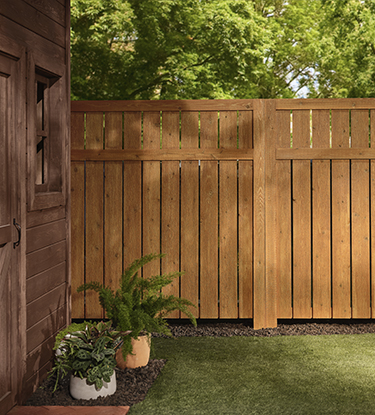Specialist Fence Staining: Change Your Fence with Enduring Results!
Just How to Pick the Right Fence Spot for Your Residential Property
When it comes to boosting the look and durability of your residential or commercial property's fence, picking the appropriate tarnish is a critical decision that requires cautious factor to consider. Exactly how can you make sure that you pick the excellent fence stain that lines up with your residential or commercial property's design and upkeep needs?
Comprehending Wood Types
To select the proper fence tarnish, it is essential to have a thorough understanding of the numerous types of timber generally utilized for fencing. When choosing a fencing stain, it is essential to consider the kind of wood being used to make sure compatibility and ideal protection. Recognizing the attributes of different timber kinds will certainly help you make an educated decision when it comes to choosing the right fence discolor for your building.
Choosing the Right Color
Choosing an appropriate tone for your fencing discolor is a crucial decision that dramatically affects the total aesthetic allure of your property. The color you pick must complement the design of your home, mix harmoniously with the environments, and mirror your personal taste. When choosing a shade, consider the existing color combination of your building. For a natural look, earthy tones like browns, environment-friendlies, or grays function well. These shades can help the fence mix right into the landscape and produce a cohesive look. If you favor a more modern-day or vibrant appearance, think about deciding for darker shades like black or deep charcoal for a striking contrast. Lighter shades such as whites or light grays can make a fencing show up bigger and add a touch of style to your home. Eventually, the best shade selection will improve the appeal of your fencing and raise the general visual allure of your home.

Taking Into Consideration Transparency Levels
When choosing the ideal shade for your fence discolor, another crucial element to think about is the degree of openness that will certainly best match your property's visual and maintenance requirements. Openness degrees in fence spots generally fall right into three classifications: clear, semi-transparent, and strong. Think about the level of direct exposure you could try here your fencing faces, the desired upkeep frequency, and the aesthetic you want to attain when picking the best transparency degree for your fence discolor.
Assessing Upkeep Requirements
Thinking about the long life and maintenance of your fence, assessing the upkeep demands is essential in determining the most suitable fence stain for your residential or commercial property. The degree of upkeep needed for your fence can differ depending upon elements such as the kind of timber, weather in your location, and your personal preferences.
When examining maintenance needs, it is necessary to consider the sturdiness of the fence discolor. Some stains need more frequent reapplication than others, so choosing a tarnish with a longer life-span can assist minimize the total upkeep requirements of your fence (Fence Staining). In addition, factors such as resistance to UV rays, water, and mold can impact just how commonly you need to re-stain your fence

Evaluating Samples Prior To Application
Before using any fence stain, it is suggested to perform sample tests to ensure compatibility with the timber and wanted visual end result (Fence Staining Nashville TN). Checking samples permits you to examine just how the discolor will engage with the particular sort of timber used in your fence, as various timbers can take in stains in a different way. To start, choose a small low-profile location of the fencing to use the tarnish examples. It is advised to examine numerous tarnish choices on this area to contrast colors and surfaces. Consider just how the stain looks when dry, as it might show up different from its damp application. In addition, observe just how the discolor complements the existing components in your outdoor area, such as landscape design or the shade of your home. Make note of just how the discolor holds up to climate condition like sunshine and dampness. By checking samples before complete application, you can make an informed choice that improves the general look of your building while safeguarding the wood effectively.
Conclusion
Finally, selecting the appropriate fencing tarnish for your residential or commercial property involves understanding the timber type, selecting the best color, considering transparency degrees, assessing upkeep requirements, and screening examples before application (Fence Staining Service). By taking these factors right into consideration, you can make certain that your fence stain complements your home while giving the necessary security and durability. Make a notified choice to enhance the look and durability of your fencing